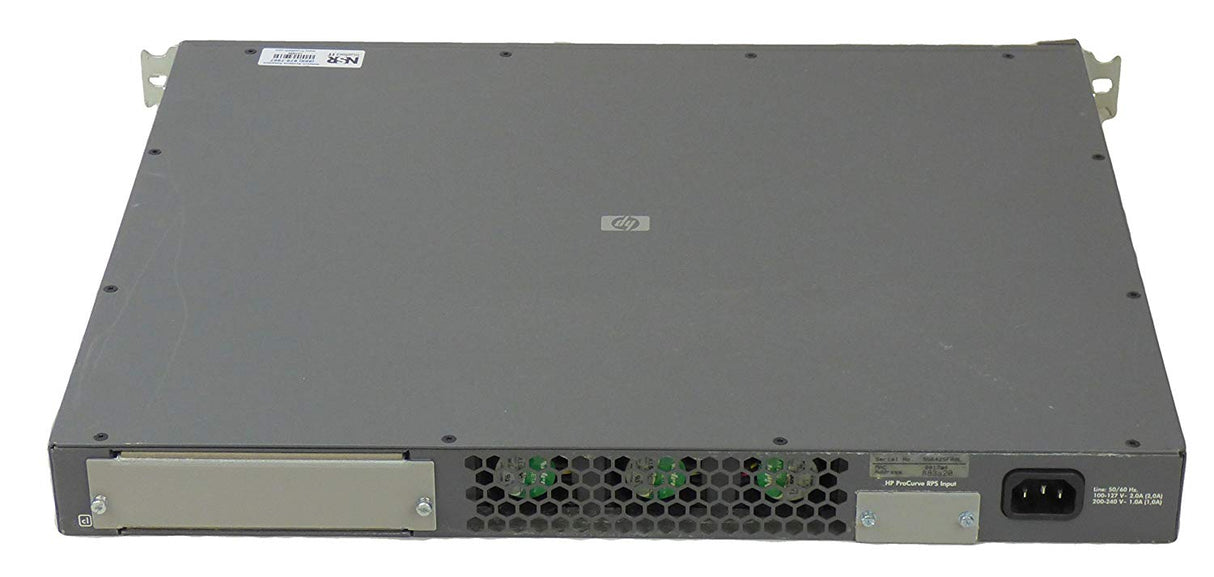Connectivity
|
-
Dual-personality functionality: four 10/100/1000 ports or mini-GBIC slots for optional fiber connectivity such as Gigabit-SX, -LX, or -LH
-
Auto-MDIX: automatically adjusts for straight-through or crossover cables on all 10/100/1000 ports
|
Performance
|
-
88 Gb/s backplane with 64 million pps (HPE 3400cl-24G Switch) and 136 Gb/s backplane with 99.5 million pps (HPE 3400cl-48G Switch):
Up to ten times the bandwidth for low-latency throughput
-
Selectable queuing configurations: Increase performance by selecting the queuing configuration that best meets the requirements of network applications
-
Jumbo frames: On Gigabit and 10 Gigabit ports, allow high-performance remote backup and disaster-recovery services (Up to 4 ports per module on Gigabit modules)
|
Resiliency and high availability
|
-
Router redundancy (XRRP): Allows groups of two routers to dynamically back each other up to create highly available routed environments
-
IEEE 802.3ad Link Aggregation Control Protocol (LACP) and trunking: Support up to 25 trunks, each with up to 8 links (ports) per trunk
-
IEEE 802.1s Multiple Spanning Tree: Provides high link availability in multiple VLAN environments by allowing multiple spanning trees
-
IEEE 802.1w Rapid Convergence Spanning Tree Protocol: Increases network uptime through faster recovery from failed links
-
Optional redundant power supply: Provides uninterrupted power (Provided by HPE 600 RPS/EPS)
|
Layer 2 switching
|
-
switch meshing: Dynamically load-balances across multiple active redundant links to increase available aggregate bandwidth
-
VLAN support and tagging: Supports the IEEE 802.1Q (4,094 VLAN IDs) and 256 VLANs simultaneously
-
GARP VLAN Registration Protocol: Allows automatic learning and dynamic assignment of VLANs
-
IEEE 802.1v protocol VLANs: Isolate select non-IPv4 protocols automatically into their own VLANs
|
Layer 3 routing
|
-
Layer 3 IP routing: provides routing of IP at media speed; supports static routes, RIP, RIPv2, and OSPF
|
Security
|
-
Access control lists (ACLs): Provide IP Layer 3 filtering based on source/destination IP address/subnet and source/destination TCP/UDP port number
-
Dynamic ARP protection: Blocks ARP broadcasts from unauthorized hosts, preventing eavesdropping or theft of network data
-
Port security: Allows access only to specified MAC addresses, which can be learned or specified by the administrator
-
Source-port filtering: Allows only specified ports to communicate with each other
-
RADIUS/TACACS+: Eases switch management security administration by using a password authentication server
-
Secure Shell (SSHv2): Encrypts all transmitted data for secure, remote command-line interface (CLI) access over IP networks
-
Secure Sockets Layer (SSL): Encrypts all HTTP traffic, allowing secure access to the browser-based management GUI in the switch
-
IEEE 802.1X: Industry-standard way of user authentication using an IEEE 802.1X supplicant on the client in conjunction with a RADIUS server
-
MAC address lockout: Prevents configured particular MAC addresses from connecting to the network
-
Web-based authentication: Similar to IEEE 802.1X, provides a browser-based environment to authenticate clients that do not support the IEEE 802.1X supplicant
-
Secure FTP: Allows secure file transfer to/from the switch; protects against unwanted file downloads or unauthorized copying of switch configuration file
-
Secure management access: All access methods-CLI, GUI, or MIB--are securely encrypted through SSHv2, SSL, and/or SNMPv3
|
Convergence
|
-
IP multicast routing (PIM Dense): Routes IP multicast traffic using the PIM Dense routing protocol
-
IP multicast snooping and data-driven IGMP: Automatically prevents flooding of IP multicast traffic
|
Quality of Service (QoS)
|
-
Rate limiting: Per-port ingress enforced maximums
-
Layer 4 prioritization: Enables prioritization based on TCP/UDP port numbers
-
Traffic prioritization (IEEE 802.1p): Allows real-time traffic classification into 8 priority levels mapped to 8 queues
-
Class of Service (CoS): Sets the IEEE 802.1p priority tag based on IP address, IP Type of Service (ToS), L3 protocol, TCP/UDP port number, source port, and DiffServ
|
Manageability
|
-
sFlow (RFC 3176): Wire-speed traffic accounting and monitoring
-
RMON, XRMON, and SMON: Provide advanced monitoring and reporting capabilities for statistics, history, alarms, and events
-
Find-Fix-and-Inform: Finds and fixes common network problems automatically, then informs administrator
-
Dual flash images: Provides independent primary and secondary operating system files for backup while upgrading
-
Friendly port names: Allow assignment of descriptive names to ports
-
IEEE 802.1AB Link Layer Discovery Protocol (LLDP): Automated device discovery protocol for easy mapping by network management applications
-
Stacking capability: Single IP address management for a virtual stack of up to 16 switches, including the HPE Switch 2500 Series, 2510 Series, 2600 Series, 2800 Series, 2810 Series, 2900 Series, 3400cl Series, 3500yl Series, 4200vl Series, 6108, 6200yl-24G-mGBIC, and 3400cl Series
|





